To help us provide you with free impartial advice, we may earn a commission if you buy through links on our site. Learn more
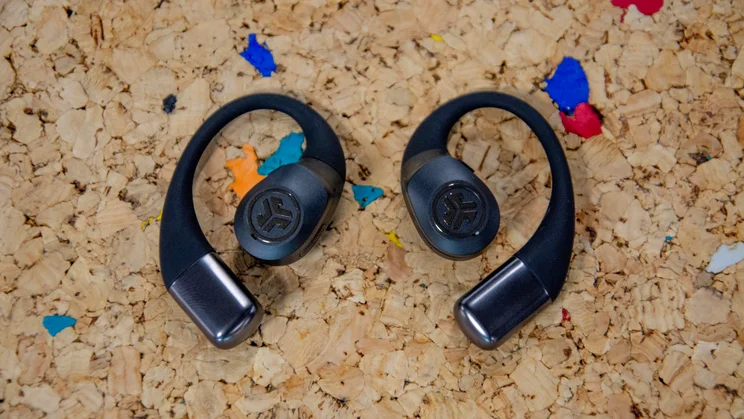

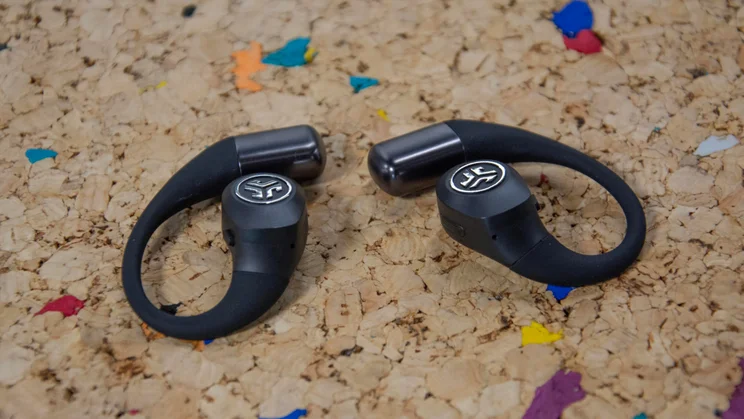
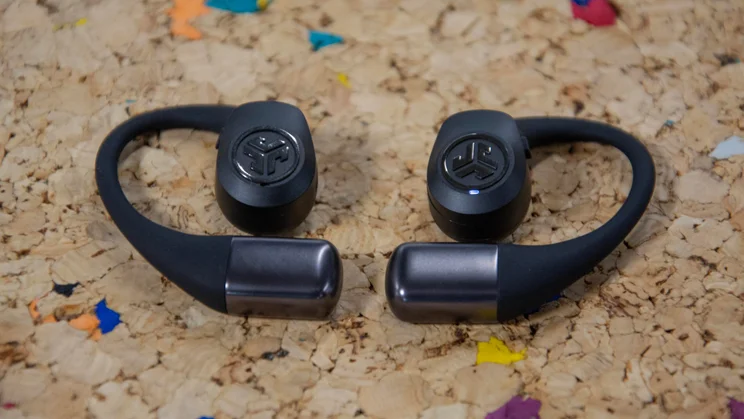
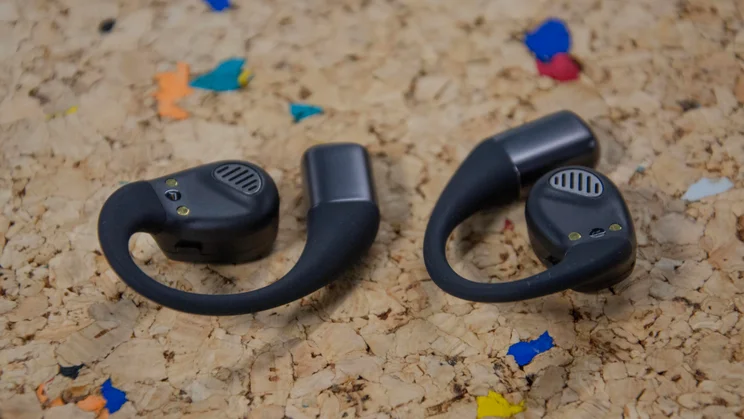

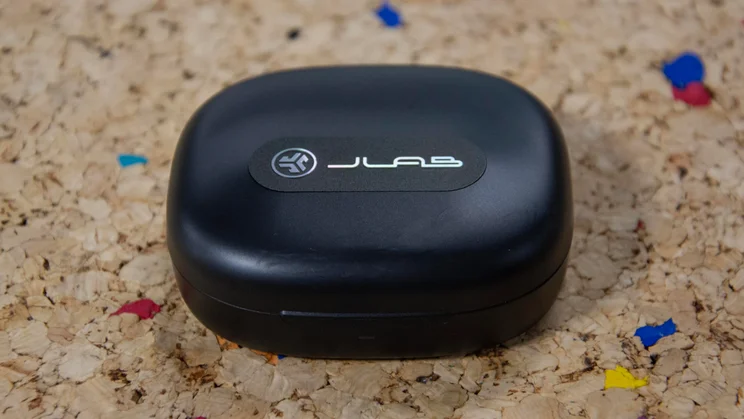
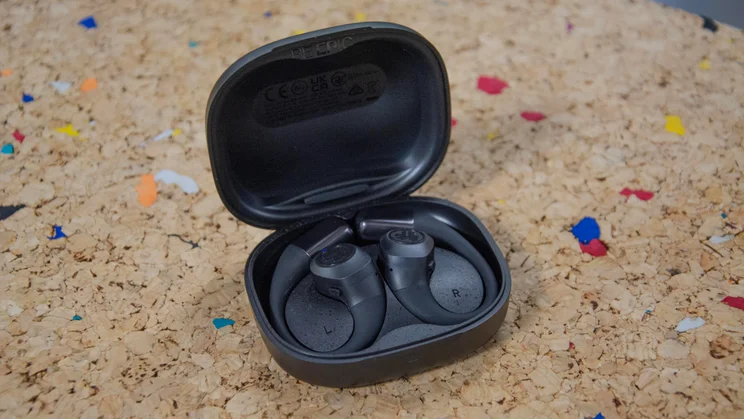
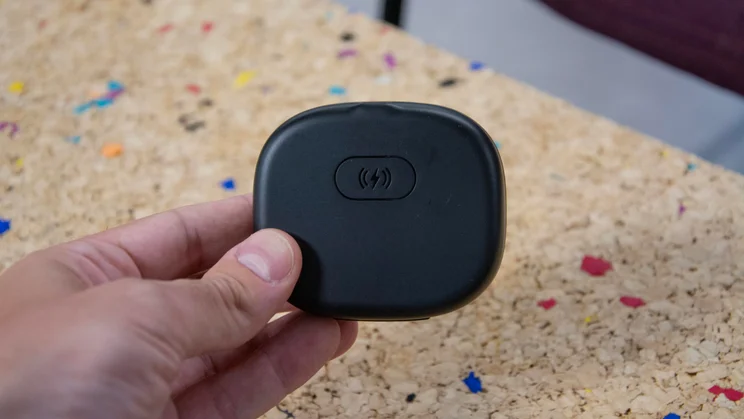
- Great control options
- LDAC support
- Wireless charging
- Could be more comfortable
- Case feels cheap and flimsy
- Lack the style of some rivals
JLab’s headphones are a big deal in the US, and I’ve started noticing the brand’s distinctive logo appearing in, on and over an increasing number of Londoners’ ears. When you look at its lineup of products and how much they cost, it’s easy to understand why. The brand has options covering every style and three separate “families” catering to a range of budgets.
The JLab Epic Open Sport are part of its Epic family, which includes its most advanced and expensive options, and, as you’ll have probably guessed from their name, are open-ear headphones designed for sport and exercise.
They’re not short of competitors in this department, but they have LDAC support, wireless charging and a clever control scheme to help them stand out. Paired with a price in line with JLab’s value-for-money reputation, the Epic Open Sport look like an appealing prospect.
What do you get for the money?
The Epic Open Sport cost £120, which is £20 more than Huawei’s elegant air conductors, the FreeArc, £10 cheaper than the JBL Soundgear Sense, and significantly less than the best-in-class Shokz OpenFit 2 Plus (£179).
In terms of design, the Epic Open Sport borrow more heavily from traditional wireless earbuds than their rivals. They still wrap around your ears using flexible earhooks, but the sections housing the 14.2mm drivers, which sit in front of your ear canals, are more bud-like in appearance. They’re lighter than all of their aforementioned rivals except for the FreeArc, with each earpiece weighing under 9g. IP55 certification means they’re well-protected from the elements but not completely dustproof or waterproof.









The supplied charging case is large; it needs to be to accommodate what are awkwardly shaped headphones. However, measuring 66 x 46 x 19mm (WDH) and weighing 50g, it’s not the biggest or heaviest around. It has wireless charging in its favour, too, which is pretty rare in this category. The stated battery life of the headphones is seven hours, with the case providing an additional 23 hours. JLab includes a braided USB-C to USB-C cable in the box.
Those battery life figures will be affected by the Bluetooth codec you’re using, and here you have more choices than is customary in the price bracket. SBC, AAC and LDAC are all supported, with the latter enabling the Epic Open Sport to stream high-resolution audio. Multipoint pairing with two devices is supported via Bluetooth 5.4, and Google Fast Pair is available when connecting to a compatible Android device.









Elsewhere, there are two noise-cancelling microphones in each earpiece to reduce ambient noise when on calls, a combination of physical buttons and touch controls, and compatibility with the JLab app. This provides access to EQ and control customisation options, a “Safe Hearing” volume limiter, and also gives a graphic representation of the battery remaining in the headphones and case.
What do they do well?
Being able to hear what’s going on externally is one of the main reasons people gravitate towards open-ear headphones, and the Epic Open Sport provide this as well as any of their rivals. That said, this aspect of performance has been pretty consistent across all of the air-conduction headphones I’ve tested.
One thing that hasn’t been consistent is how controls are handled, and the Epic Open Sport impressed me in this regard. Rather than opt for either physical buttons or touch controls, the Epic Open Sport incorporate both. More importantly, you’re free to customise any or all of the commands exactly to your liking. The default setup assigns play/pause, call controls and voice assistant functionality to buttons on the top of the buds and everything else to taps or a long press on the outer surfaces of the buds. If you decide this isn’t working for you, simply switch things around in the app or turn one or the other off entirely.









I copied the controls on the buttons to the touch surfaces and used them interchangeably, depending on what I was doing. Touch controls were my go-to at home and in the office – when I was running, it was more convenient to execute commands via the depressible buttons. Such freedom over control personalisation is a blessing.
The inclusion of LDAC support is another thing to be happy about. The Epic Open Sport are the first open-ear headphones I’ve tested to support it, and the step up in fidelity between 16-bit/44.1kHz and 24-bit/96kHz streaming was apparent when listening to Sam Fender’s People Watching. I got a clearer, more nuanced picture of the instrumental aspects of the tracks, and the Geordie artist’s vocals sounded that little bit crisper. However, it wasn’t a night-and-day difference, and these observations were most obvious in quiet conditions; I was still able to hear an improvement in noisier environments, but only at much higher volume levels.
In general, I found the Epic Open Sport’s audio well-tuned for the situations the headphones are designed for. The JLab Signature EQ is distinctly V-shaped and was my preference when exercising, thanks to its beefier bass response and more prominent treble. In the office, when fewer external distractions meant I could appreciate subtler elements of musical arrangements, the flatter Balanced mode served me better. The Custom EQ setting is one of the more effective I’ve used, too; tweaking each of the ten bands on the graphic equaliser had a tangible impact on the overall sound.









Handily, you can switch between EQs using the on-device controls. Most headphones require you to get your smartphone out to change EQ; not having to do so was a welcome convenience. The Epic Open Sport’s multipoint device switching is also incredibly convenient. It could be more seamless – there was a bit of a lag as audio switched from my laptop to my phone and vice versa – but I was able to live with it.
Finally, it’s worth pointing out that the Epic Open Sport’s battery life exceeds that of both the Huawei FreeArc and JBL Soundgear Sense. No one can get close to the Shokz OpenFit 2’s frankly ridiculous 48 hours, but these JLabs come a respectable second among the sport-focused open-ear headphones we’ve tested.
What could be improved?
Connecting a second device via Bluetooth is a faff. You have to turn off Bluetooth on your primary device, put the headphones back in their case, pair the second device, then reengage Bluetooth on the initial device. Why there isn’t an easier way to put the Epic Open Sport into pairing mode and simply connect a new device is beyond me.
While I like how small the bud sections of the headphones are, I don’t think the aesthetic is as stylish as that of the Huawei FreeArc or Shokz Open Fit 2. This is a matter of preference, of course, but for me, the Sport’s rivals have the edge here. I’m also not fond of the charging case. The fact that it supports wireless charging is a big win, but it feels cheap, plasticky and worryingly flimsy.









I didn’t find the Epic Open Sport quite as comfortable as other open-ear headphones I’ve worn, either. They’re not uncomfortable – no open-ear options I’ve tested have been. I had no problems positioning their drivers exactly where they needed to be to direct sound into my ears, and they remained stable and secure once there. However, their earhooks pressed against the back of my ears slightly more intrusively than Huawei’s take on the open-ear format. This only became an issue after wearing them for a while, though; it’s not something that bothered me during the time it took to complete a 5k run.
Finally, while not an area of improvement per se, I have to question just how worthwhile LDAC support is here. These are headphones made for sport and exercise that, by virtue of their open-ear design, will pretty much always sound inferior to price-comparable silicone-tipped true wireless alternatives.
LDAC did improve my audio experience, but only when using the headphones at home or in the office. Out and about, in the gym or running around the park, I found myself forgoing it in favour of the more energy-efficient AAC codec.
Should you buy the JLAB Epic Open Sport?
If you can see yourself making smart use of LDAC and can pick up the Epic Open Sport on offer, there’s a case to be made for them. They’re open, sporty, able to deliver good sound quality, and their hybrid control scheme is the best approach I’ve come across on a pair of open-ear headphones to date.
But they’re far from best in breed. On balance, I’d rather have the more comfortable fit and eye-catching appearance of the Huawei FreeArc. Alternatively, I’d save up and buy the Shokz OpenFit 2 that my colleague Ben has been gushing over since reviewing them.







